BURO Bar Lingo: A guide to the common types of wine and their varieties
Sips about to go down
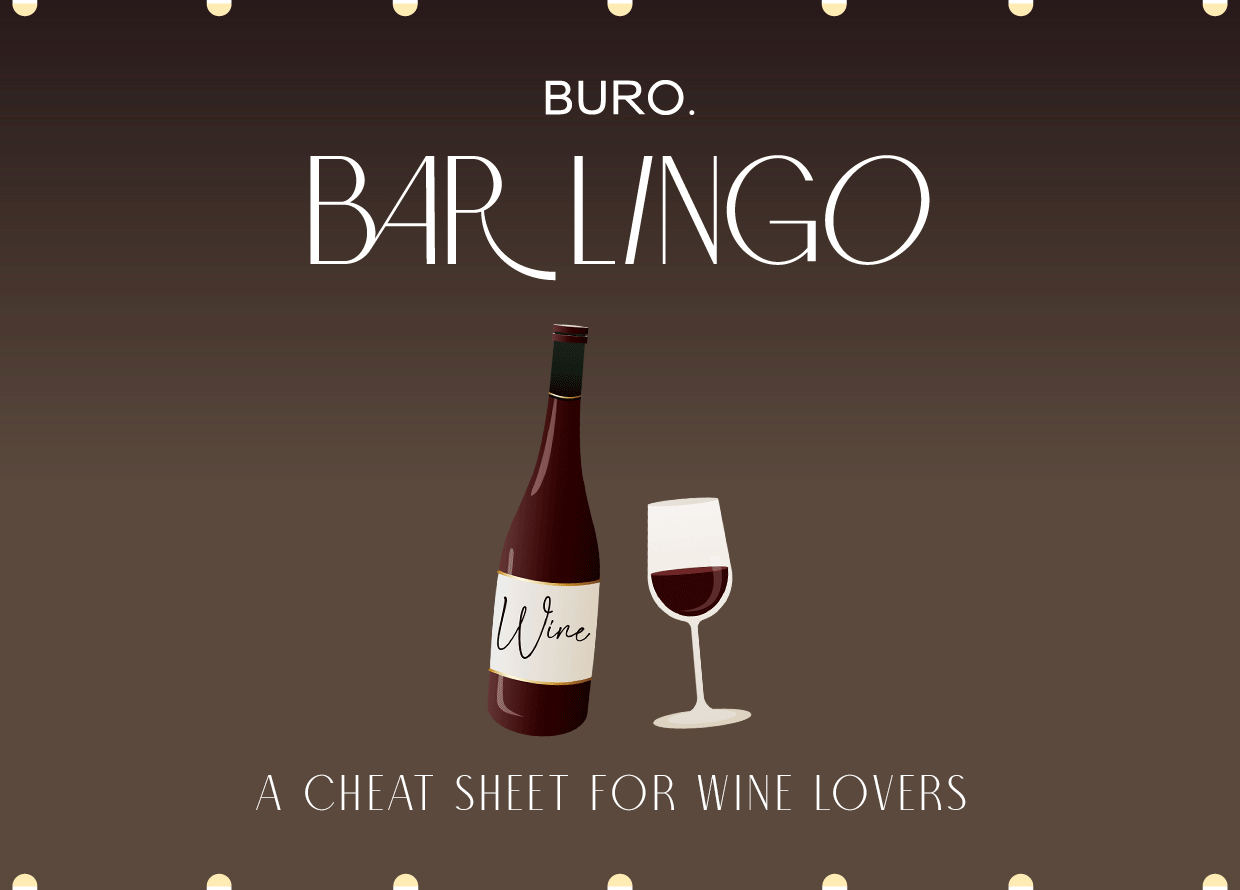
Picture this: you’re out for a fancy date or drinks night with some friends and there’s an extensive wine list on the menu. Do you A) pick out an expensive bottle in hopes that it lives up to the price tag, or B) *actually* have a rough idea of what you might be drinking?
Granted, there are tens of thousands of wineries in the world and loads more wine varieties. It would take years of regular drinking and note-taking to grasp just a fraction of the complexities of wine, but there are a few common characteristics that can help you pick out one that suits your preferences. After all, wine—like most food and drinks—are subjective to personal taste.
But first, a quick wine 101 in case you missed our beginner’s guide to alcoholic beverages:
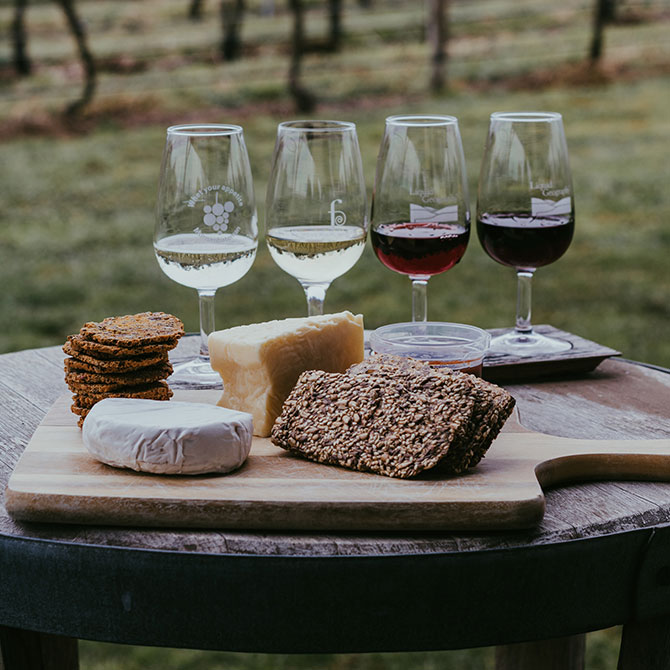
Wine is made by fermenting grape juice. However, these aren’t your regular grapes from the grocery store. Wine grapes usually have thick skins, which impart more flavour, and are also smaller than table grapes, resulting in a more concentrated taste. There are different factors that influence the taste of wine, including the grape variety, climate, fermentation process, aging duration, and the type of vessel it’s aged in.
Whether you’re a social drinker or simply trying to impress a date, here’s a cheat sheet of the five types of wines and the most popular varieties to know.
RED WINE
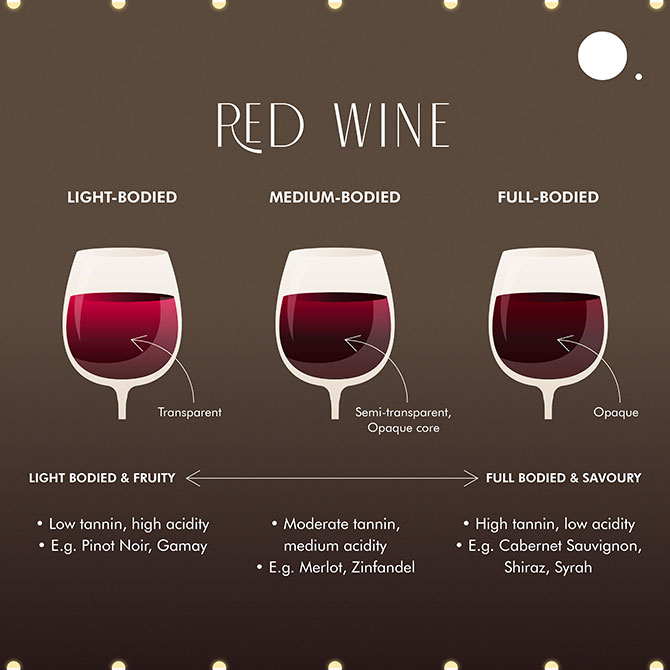
Red wine is made from red/black grapes (note: these colours are sometimes used interchangeably when talking about wine grapes). The colour can range from light ruby to oxblood, which is derived from fermenting grapes together with their skins. This also imparts tannins, which is what leaves that dry, rubbing sensation on your tongue.
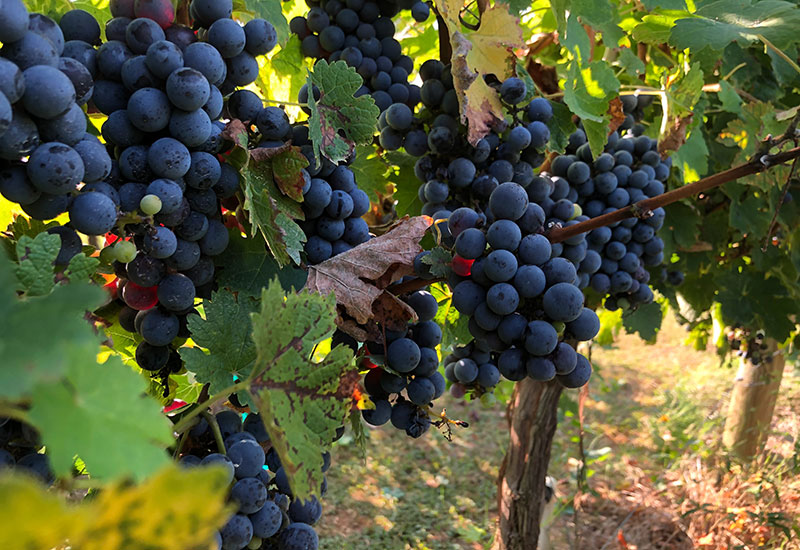
Cabernet Sauvignon
Cabernet sauvignon is a full-bodied, acidic wine made of its namesake grape variety, which is the most planted grape in the world. It is a hybrid grape, formed by crossing a cabernet franc (a red grape) with a sauvignon blanc (a white grape). It has strong tannins that mellow with age.
Malbec
Malbec is a full-bodied, acidic wine with a deep purple-red hue. Though French in origin, it is now most widely produced in Argentina. It has medium to high tannins.
Merlot
Merlot is the second most planted grape variety after cabernet sauvignon. It is used for wine blends as well as single varietal wines. The latter usually has a dry, medium body with moderate acidity and soft but present tannins. It is usually lighter in colour than Cabernet Sauvignon but darker than Pinot Noir.

Pinot Noir
Pinot noir is a light-bodied red wine with fewer tannins and a shorter lifespan in the bottle. The name comes from the French word for pine (pinot), as the grapes grow in pine cone-shaped clusters, and black (noir), a nod to their dark colour.
Shiraz
Shiraz is made from the same grape variety as syrah (see below), which was originally introduced by France to Australia. It became the most popular red wine grape there, gradually adopting the name Shiraz (not to be confused with a different wine produced historically in the city of Shiraz in Persia, or modern day Iran). Both have similar characteristics, but Shiraz tends to slightly richer and lush with flavours.
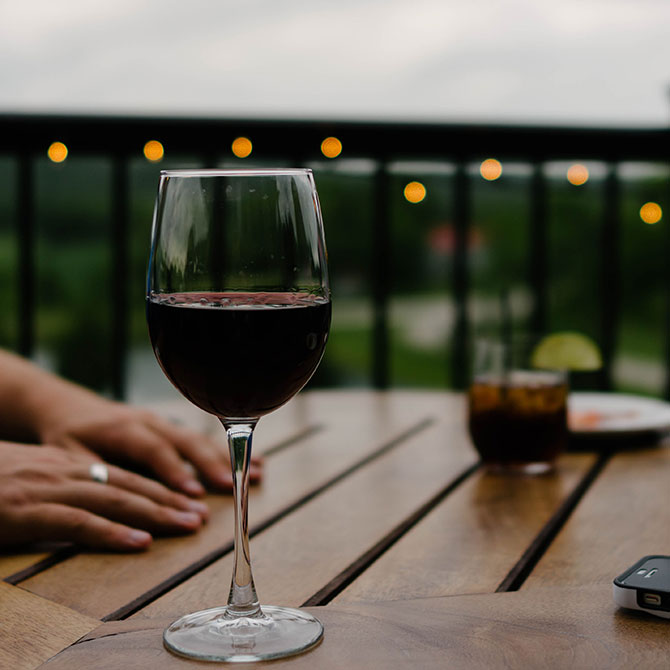
Syrah
Syrah refers to a dark grape variety and the red wine it produces. It is typically bold and full-bodied with high tannins and fruity, peppery flavours.
Zinfandel
Zinfandel is a light-bodied red wine like Pinot Noir, but contains moderate tannins and high acidity. The grape variety originates from Croatia and is popularly grown in California today.
WHITE WINE
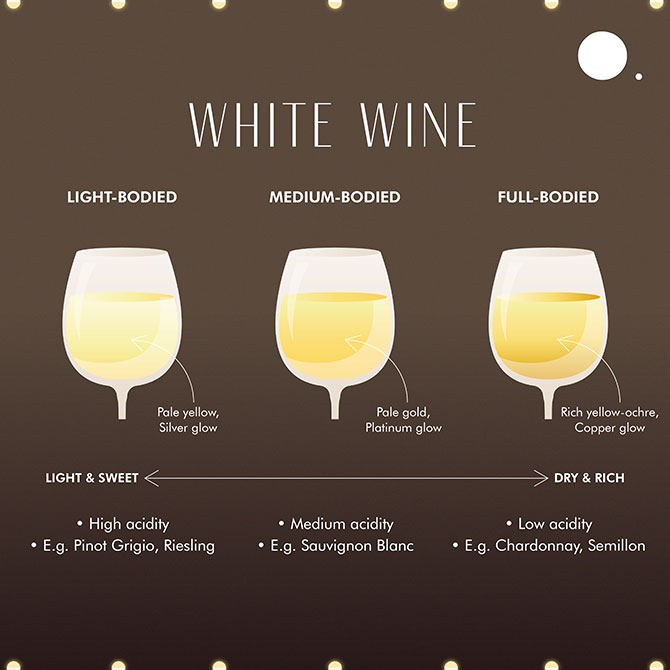
White wines can be made from white or black grapes, but they are usually fermented without the skins, resulting in a pale colour and low tannins. White wines tend to be more tart and refreshing than reds.
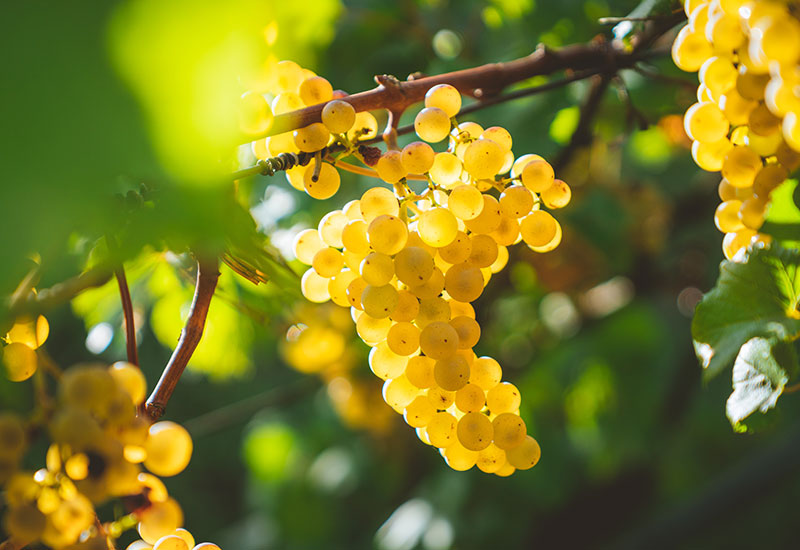
Chardonnay
Chardonnay refers to a green grape variety used to make white wine of the same name. It is native to Burgundy, France, but is now widely grown around the world. The wine is typically dry and full-bodied, with a medium gold hue and moderate acidity.
Pinot Grigio/Pinot Gris
Both pinot grigio and pinot gris are made from the same grape variety which originated in Burgundy, France. They are used to produce white wine, with a slight difference in flavour profile—the Italian-style pinot grigio being more light-bodied and crisp, whereas the French-style pinot gris tends to be rich and spicy.
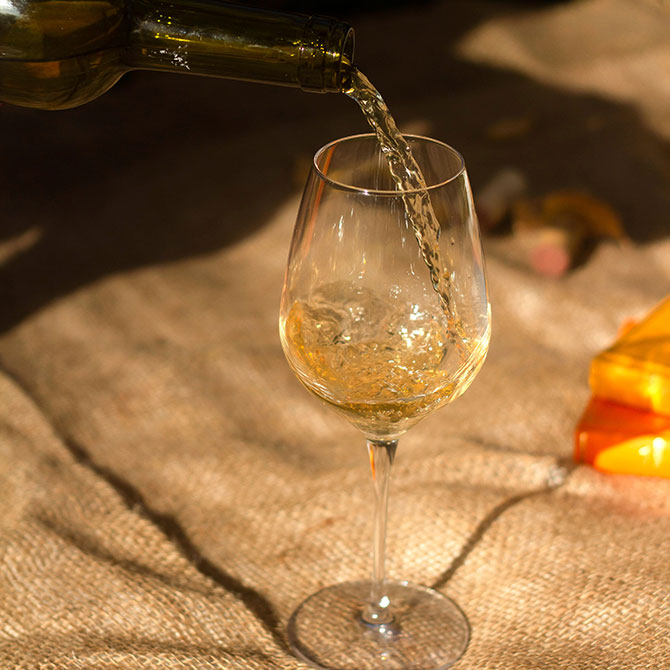
Riesling
Riesling is a green grape variety native to the Rhine River region in Germany. The grapes produce a varietal white wine that is light-bodied and fruity, with high acidity and varying sweetness or dryness depending on the conditions it is grown in.
Sauvignon Blanc
Sauvignon blanc refers to both the green grape variety and the white wine made from them. It is one of the most popular white wines, prized for its refreshingly high acidity and citrusy flavours.
ROSÉ WINE
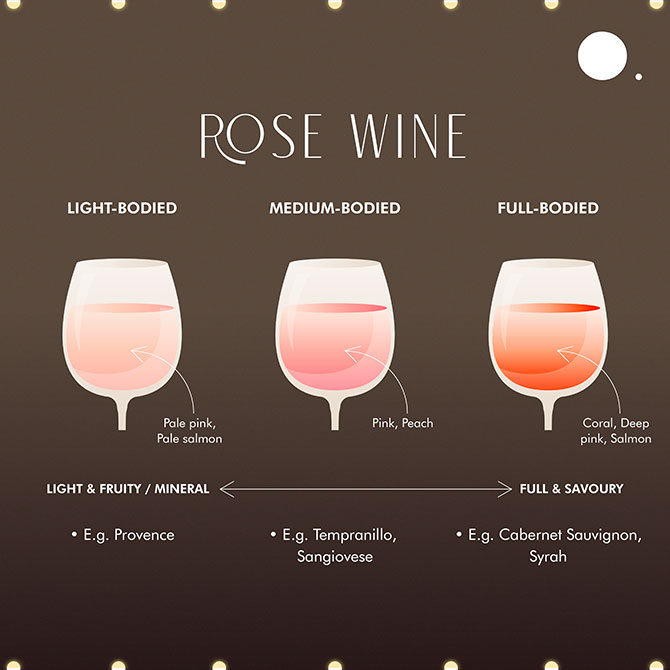
Some may think that rosé wines are a blend of red and white wines, but this is rarely the case. In fact, blending the two wines is frowned upon in some European countries. Most rosé wines actually start like red wines where the grapes are left to soak (macerate) in their skins, except the skins are removed after a short period of time while the juice continues to ferment. This results in a blush colour that can range from salmon to deep pink, depending on how long the juice is in contact with the grape skins. Many red wine grapes such as Cabernet Sauvignon, Pinot Noir and Syrah can also be used to make rosés this way. The resulting rosé has low tannins and lighter flavours compared to reds.
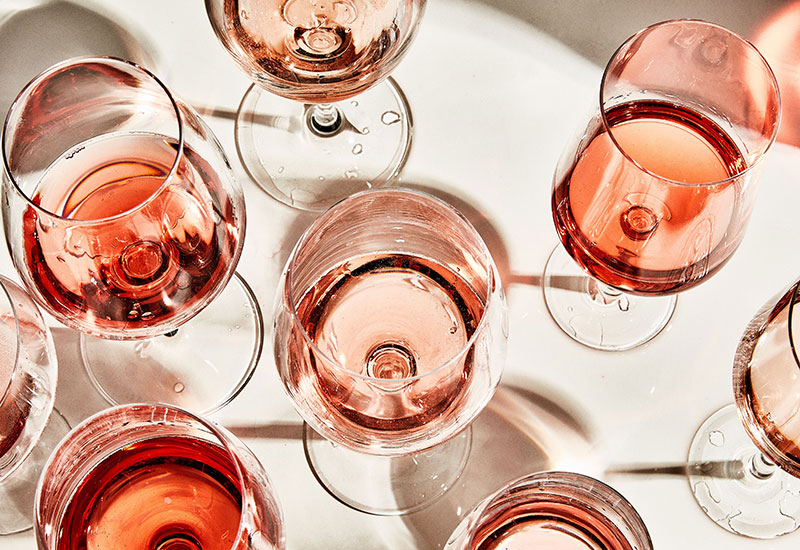
Provence
Provence rosé is arguably the most versatile and classic rosé wine. It is known to be light-bodied with low tannins and medium acidity, and pairs well with a range of cuisines. Provençal grapes commonly include Grenache, Cinsault and Mourvèdre.
Rosado
Spaniards love a good rosé, known locally as rosado. Tempranillo are the main grapes used to make various styles of rosados, which tend to be pale pink in colour and taste savoury, dry, and fruity. It is usually medium to full-bodied with medium to high acidity.
Rosato
In Italy, rose wines are called rosato. Sangiovese rosé is a popular Italian-style rose, made from the red grape of the same name. It is a medium-bodied wine with moderate to high tannins and is known for its dry, bold and fruity flavours.
SPARKLING WINE

Sparkling wine is any fermented grape juice that contains carbonation (carbon dioxide), which makes it bubbly. It can be white, rosé or red wine, and the bubbles are a naturally occurring result of fermentation.
Cava
Cava is the sparkling wine of Spain. Its name comes from the native word for “cave”, referring to the cellars where the wines age. To be called cava, the wine must come from the Cava Denominación de Origen (DO) region in Spain and must be carbonated with a secondary fermentation in the bottle.

Champagne
Champagne is the most popular type of sparkling wine, which must be made in the Champagne region of France. According to regulations, it must be made only from seven approved grapes, the most common of which are chardonnay, pinot noir, and pinot meunier. In addition, it must be made with a specific winemaking technique called the méthode champenoise, where the wine undergoes a second fermentation in the bottle (similar to cava).
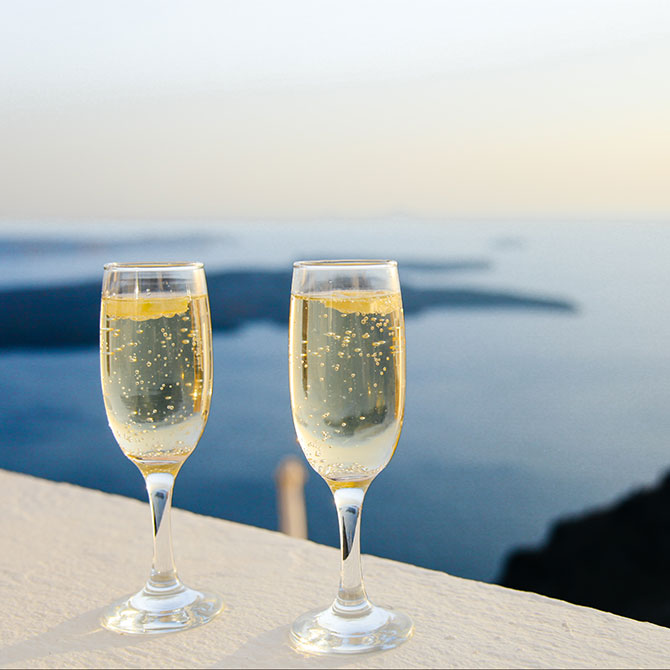
Prosecco
Prosecco is an Italian sparkling wine made from prosecco grape and is produced primarily in the Veneto region in northeast Italy. It is slightly different from cava and champagne in that the second fermentation takes place in large tanks before it is bottled under pressure—also known as the Charmat method. This process results in larger bubbles and bready aromas. Prosecco is usually offered in Extra Dry or Brut options.
DESSERT WINES & FORTIFIED WINES

Dessert wines and fortified wines are often grouped together because they’re both on the sweeter side of the wine spectrum. Dessert wines are broadly defined as any sweet wine, usually served after a meal. Fortified wine is any wine that’s fortified with an addition of a distilled spirit (usually brandy). It’s high in alcohol and sugar, and is also more commonly served before or at the end of a meal.
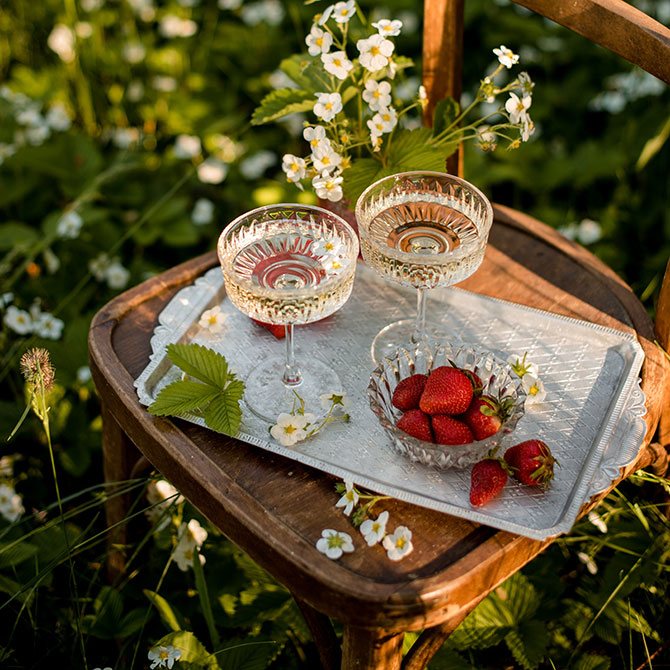
Port
Port wine is Portugese fortified wine produced exclusively in the Douro Valley of northern Portugal. It is a rich and sweet wine known for its fruity, chocolate flavours, making it suitable as dessert wine. There are four types of port, namely red port (the most common), white, rosé, and tawny port (the sweetest and most complex).
Moscato
Moscato is the Italian name for Muscat, a grape variety known for its sweet, fruity notes. While muscats are grown around the world, a true Moscato hails from Italy. There are various styles of Moscato, including sparkling and still, but they generally taste on the sweet side. Moscato wines pair well with appetisers and desserts, and can also be served as an aperitif.

Sauternes
Sauternes is a French sweet white wine originating from the region of the same name in Bordeaux. It is made primarily from sémillon, sauvignon blanc, and muscadelle grapes affected by “noble rot”—a grey fungus that infects overripe grapes and results in higher sugar and flavour content. This makes it ideally served as dessert wine.
Sherry
Sherry is a fortified wine from the Jerez region of Spain, made from Palomino, Muscat, or Pedro Ximénez grapes. During fermentation, the base white wine is fortified with a distilled grape spirit and then placed into wooden casks to mature. There are many different styles of sherry, making it one of the most versatile fortified wines.
Vermouth
Vermouth is a fortified wine that is flavoured with various botanicals and spices. It starts with a red or white wine base which can be sweet or dry, and is then fortified with a distilled spirit (usually brandy). Since producers may use different wine bases, this results in wide-ranging styles of vermouth. It can be enjoyed as an aperitif, neat or over ice, or mixed into cocktails.
Find more BURO Bar Lingo stories here.
| SHARE THE STORY | |
| Explore More |



